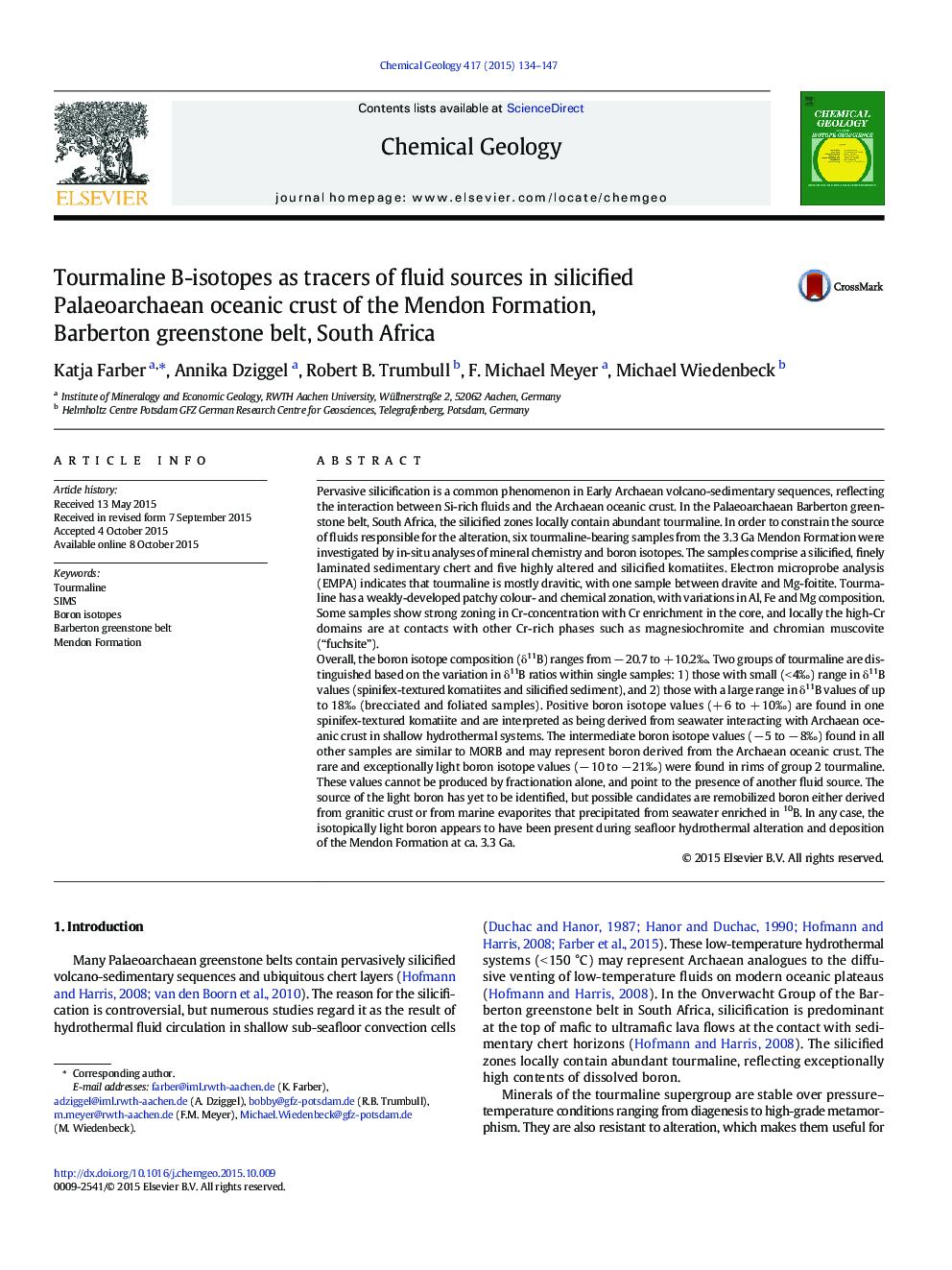| کد مقاله | کد نشریه | سال انتشار | مقاله انگلیسی | نسخه تمام متن |
|---|---|---|---|---|
| 6436250 | 1637557 | 2015 | 14 صفحه PDF | دانلود رایگان |

- Boron isotopes in Palaeoarchaean tourmaline show evidence for multiple boron sources.
- Boron sources are Archaean seawater, Archaean oceanic crust, and a third isotopically light source.
- The latter may reflect remobilized boron derived from mature continental crust or isotopically light seawater (10-15â°).
Pervasive silicification is a common phenomenon in Early Archaean volcano-sedimentary sequences, reflecting the interaction between Si-rich fluids and the Archaean oceanic crust. In the Palaeoarchaean Barberton greenstone belt, South Africa, the silicified zones locally contain abundant tourmaline. In order to constrain the source of fluids responsible for the alteration, six tourmaline-bearing samples from the 3.3 Ga Mendon Formation were investigated by in-situ analyses of mineral chemistry and boron isotopes. The samples comprise a silicified, finely laminated sedimentary chert and five highly altered and silicified komatiites. Electron microprobe analysis (EMPA) indicates that tourmaline is mostly dravitic, with one sample between dravite and Mg-foitite. Tourmaline has a weakly-developed patchy colour- and chemical zonation, with variations in Al, Fe and Mg composition. Some samples show strong zoning in Cr-concentration with Cr enrichment in the core, and locally the high-Cr domains are at contacts with other Cr-rich phases such as magnesiochromite and chromian muscovite (“fuchsite”).Overall, the boron isotope composition (δ11B) ranges from â 20.7 to + 10.2â°. Two groups of tourmaline are distinguished based on the variation in δ11B ratios within single samples: 1) those with small (< 4â°) range in δ11B values (spinifex-textured komatiites and silicified sediment), and 2) those with a large range in δ11B values of up to 18â° (brecciated and foliated samples). Positive boron isotope values (+ 6 to + 10â°) are found in one spinifex-textured komatiite and are interpreted as being derived from seawater interacting with Archaean oceanic crust in shallow hydrothermal systems. The intermediate boron isotope values (â 5 to â 8â°) found in all other samples are similar to MORB and may represent boron derived from the Archaean oceanic crust. The rare and exceptionally light boron isotope values (â 10 to â 21â°) were found in rims of group 2 tourmaline. These values cannot be produced by fractionation alone, and point to the presence of another fluid source. The source of the light boron has yet to be identified, but possible candidates are remobilized boron either derived from granitic crust or from marine evaporites that precipitated from seawater enriched in 10B. In any case, the isotopically light boron appears to have been present during seafloor hydrothermal alteration and deposition of the Mendon Formation at ca. 3.3 Ga.
Journal: Chemical Geology - Volume 417, 6 December 2015, Pages 134-147